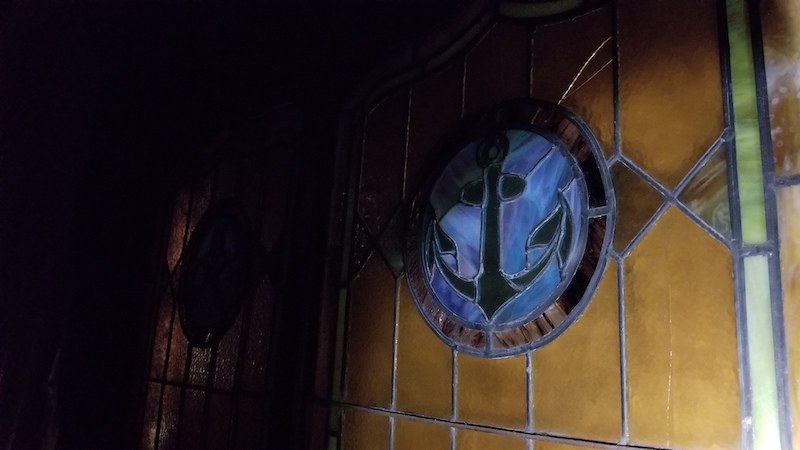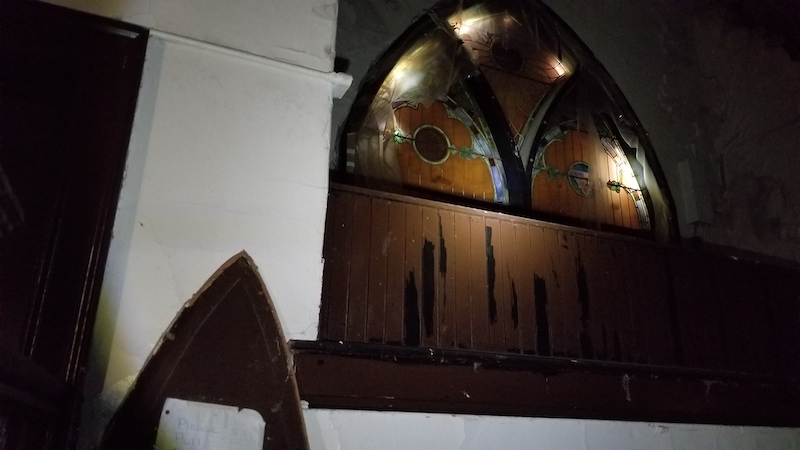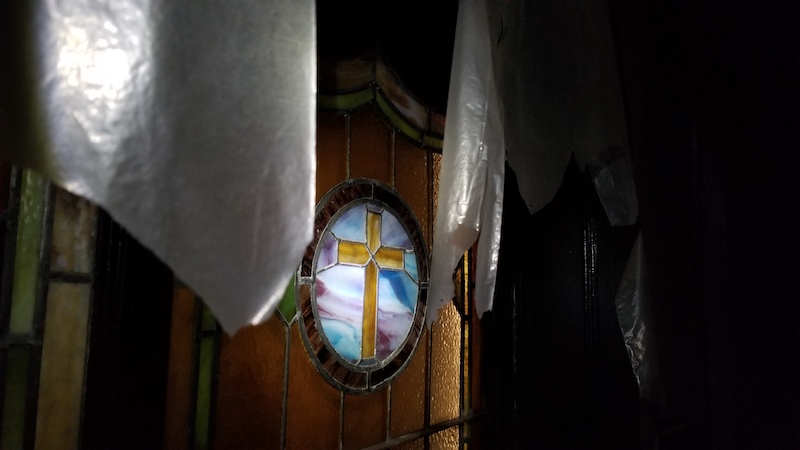Model by Sonny Cirasuolo
Despite the former church building being one of the last-standing spaces that housed part of the little-known civil rights movement history in Syracuse, the current congregation of the People’s AME Zion Church, now located at 2306 South Salina Street, has struggled to receive the support and funding to maintain the building at 711.
As the new wave of community grid development moves in next door, members of People’s, which is the oldest Black congregation in Syracuse dating back to 1837, hope that their history and current contributions to the community won’t continue to be overlooked.
For the past decade, the congregation’s current leader, the Rev. Daren Jaime, has spearheaded a vision for converting the former church building into a community gathering space and café. Jaime and his congregation have currently raised $500,000 in grant funding to begin preserving the structural integrity of the now-vacant building, but architects on the project predict that that funding will need to at least double for the space to be made usable again.
Beyond the history within the former church building itself, architect of the preservation project Beth Crawford sees the building’s value as a cornerstone of the new development coming to the 15th Ward. “It’s one of those neighborhoods that doesn’t have a ton of historic fabric left,” Crawford said. “Knitting fabric together is a really important thing for a neighborhood. The city can be looking at design guidelines for new construction so that [it] compliments the adjoining fabric.”



Current leaders of the People’s AME Zion Church hope their historical church building will be preserved and remembered as “an anchor for Syracuse’s African American community and a beacon for the larger world,” as written in their 2011 application for the National Register of Historic Places. In many ways, the fate of 711 will serve as a litmus test for whether the coming redevelopment of the 15th Ward will acknowledge and buoy awareness for the area’s past communities and their mistreatment, or will launch forward as a ship without an anchor and continue the city’s trend of deeming perceived blight as expendable rather than part of a rich urban fabric.
Historic preservation ranked among top reasons the grid gained favor among locals and transportation planners. Under the state’s alternative plan to rebuild the viaduct taller and wider to accommodate modern safety features, 21-35 buildings including 10 historic ones stood to be demolished. With the grid plan, only 5-10 buildings and none of them historic are projected to be demolished.
Primary pushback against the community grid has come from Save 81, a group of employers, unions, and community groups concerned that removing the I-81 viaduct will adversely impact Destiny USA, hotels, and other businesses along the interstate. But after more than 10 years of study including traffic and accident patterns, the state transportation department’s engineers announced their preference for the grid option. Under the grid plan, the existing I-81 will remain as a business loop connecting drivers to downtown Syracuse at high speeds except for the 1.4 mile stretch through the center of the city, and interstate traffic will be redirected to I-481.
According to extensive data from the state transportation department, most commute times for travelers in and out of the city are not projected to change.
The community grid will spur change, however, in how residents and visitors interact with the city, and especially the 15th Ward. Ed Bogucz, an engineering associate professor at Syracuse University, imagines future prospective students and others coming to the Hill via the coming interchange of I-690 and Irving Avenue. “This [15th Ward] neighborhood is going to pop, because not only will this intersection be the front door for the Hill, it’ll also be the front door for downtown.”
Bogucz is also the founding executive director at the Syracuse Center of Excellence, which stands one block over from the former People’s AME Zion Church on East Fayette Street on the property that used to be the L.C. Smith typewriter factory. The factory was one of many across the city to fall into disrepair after many manufacturers left by the late 20th century.
Jessie Griffin came to Syracuse in 1952 to work on the General Electric assembly line building TVs. But over the years, she watched as her youngest son moved to Texas when General Motors closed in Syracuse, and as all five of her grandchildren grew up in Syracuse but moved to Alabama, Georgia, and North Carolina after graduating from college.